
archives for 04/2019

I've been on some pretty amazing adventures since I checked in last.
The most inspiring was a five-day
wolf-watching trip in Yellowstone National Park (which I blogged
about on my werewolf site because, well, wolves).
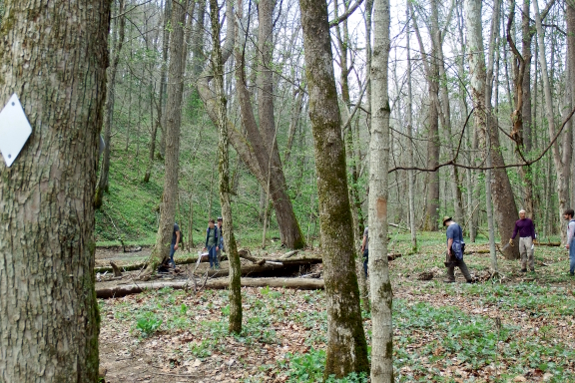
More relevant to this blog is the mushroom foray I attended yesterday
in Wildcat Hollow outside of Glouster. This was such a delightful
adventure, like an Easter egg hunt in the woods searching for every
kind of fungus we could find to be ID'ed by pros then uploaded to a
website for inventory purposes.
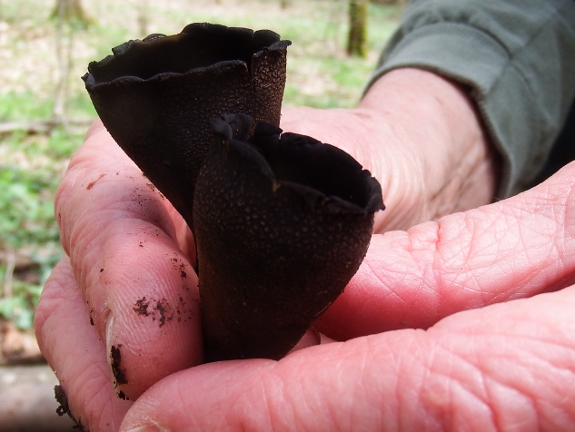
Most of the mushrooms we found were just pretty, like this Devil's Urn.
Some weren't even pretty --- drab and dried fruiting bodies from last
year. And then there were the medicinal/edibles, about which I took
extensive notes.
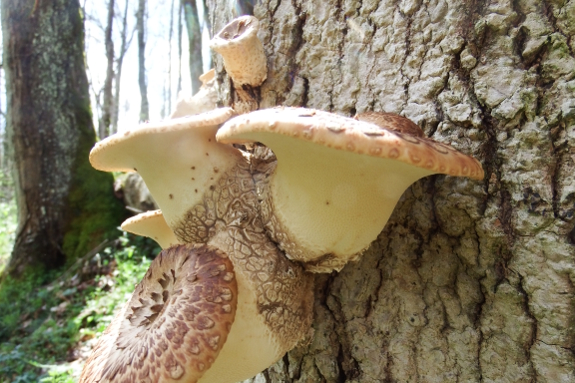
I'll start with the Dryad's Saddle, which I'd
seen many times before.
But I'd never understood that the young ones are such choice edibles,
identified both by their unique visuals and also by their even more
unique cucumber scent. Chop up any that are tender into thin slices
then saute for about ten minutes until well cooked,and I suspect
you'll find them as complexly delicious as Mark and I did.
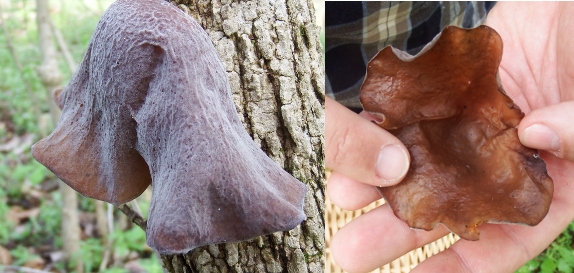
The Wood Ear is used widely in Asian cooking, so I might have actually
eaten this one before without knowing it. It's a jelly-like fungus,
growing on live wood. I haven't cooked my sample yet --- tomorrow's
experiment!
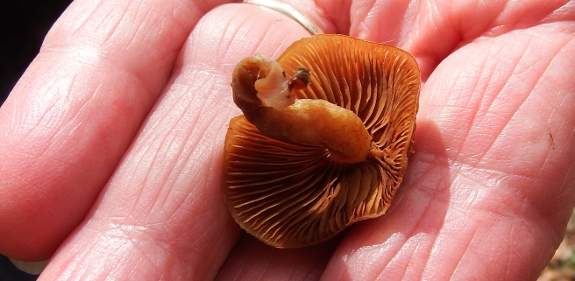
Do not, however, nibble on
these Deadly Galerinas. Their orange-tan color is relatively
distinctive and they grow in a similar habitat to the edible Honey
Mushrooms. If in doubt, throw it out!
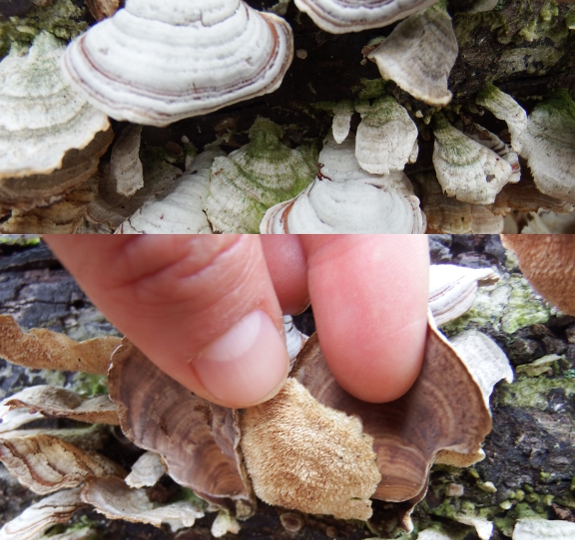
Moving on to medicinals, I enjoyed a side-by-side comparison of False
and True Turkeytails, finally wrapping my head around the differences.
True Turkeytails are polypores, fuzzy on top and rough on the bottom.
False Turkeytails are parchment mushrooms, smooth on both sides. These
images are last year's fruits, so both species have faded a lot. But I
now feel confident I could pick the True and not the False.
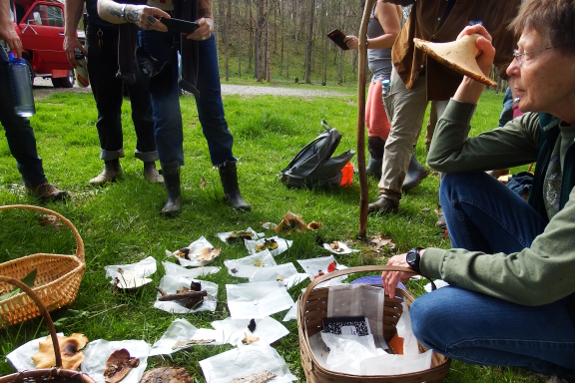
The image above is just a small sampling of our haul, shown in all its
glory. Martha from the Ohio Mushroom Society
rattled off scientific
names so fast most went in one ear and out the other. But I joined up
and will look forward to learning more during our next foray!
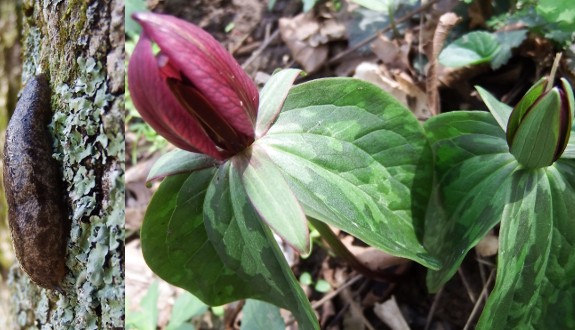
I can't resist ending with at least one of the many stunning
wildflowers that graced this trail. Go outside --- it's the most
beautiful time of the year!
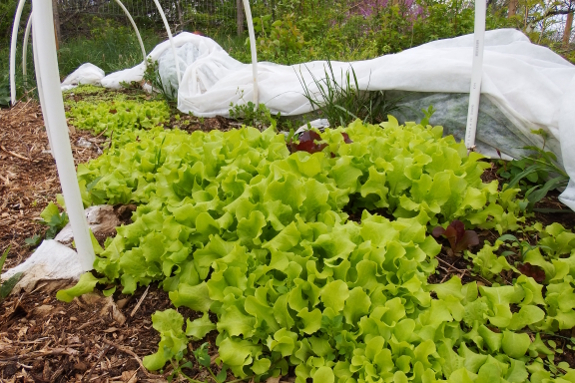
We've been in Ohio for a year and a half, but took us six months (most
of that winter) to get the fence going so we could safely plant inside.
Which means our vegetable garden is just about a year old.
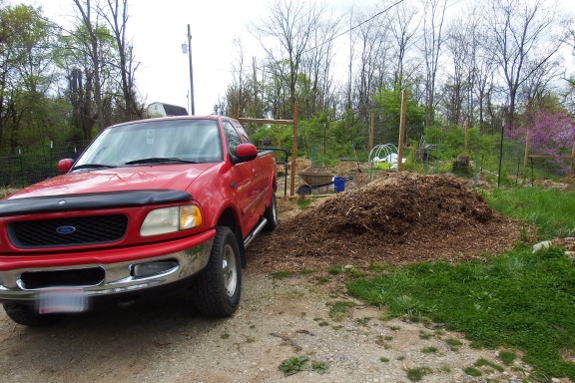
During that year, I've been learning local biomass sources. Most are
higher-carbon and less-aged than I'd prefer, but they make up for what
they lack in quality in their quantity and ease of hauling. When the
road-clearing crew dumped a huge pile of wood chips right by my garden
gate last year, I decided I love being close to a road!
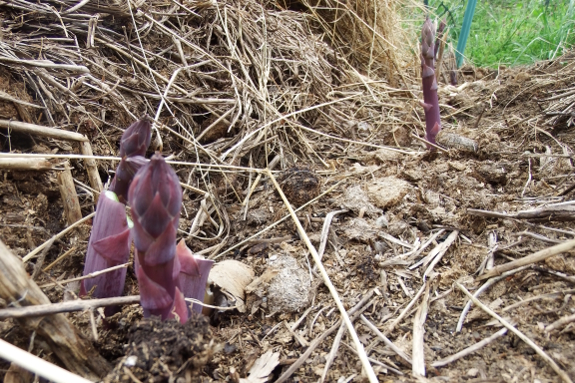
At the same time, I'm remembering what it was like to plant into young
garden soil. Between cover crops
and copious additions of organic
matter, I'd gotten my Virginia soil primed so growing there was
nearly like planting into big mounds of potting soil. Up here, the clay
subsoil is close to the surface and the biomass I'm adding is only
gradually working its way down through no-till layers of cardboard and
newspaper.
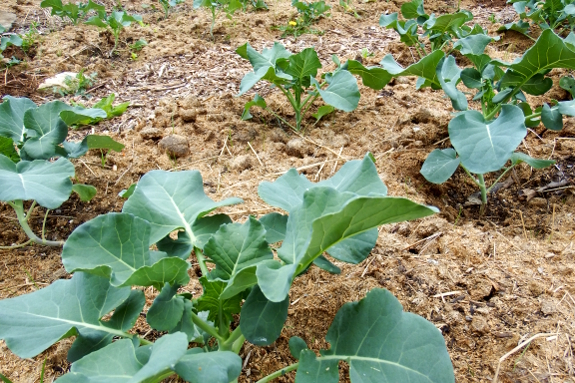
So I garden a little differently. Applying half-composting horse
manure/wood chips is acceptable in most garden areas (although the
combo did kill a barely-survived-the-winter thyme plant). The trick is
to pull the mixture back a bit from the plants (sidedressing instead of
topdressing). If possible, I also apply manure at least a month before
my planting date.
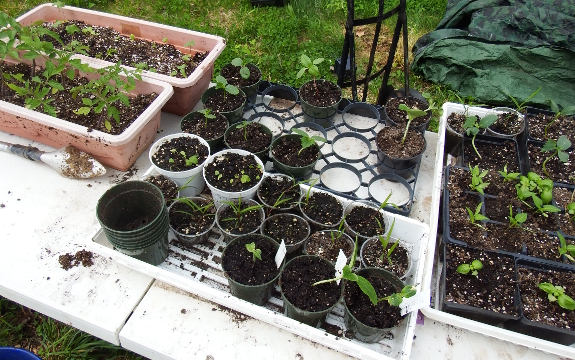
I've also been starting more seedlings inside, potting them up into
small cups and letting them grow for a few weeks before setting them
out into the garden. The reason for this is twofold.
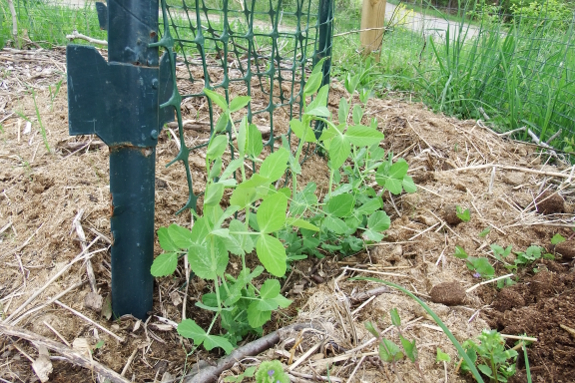
First, it's tougher to get seeds to sprout happily in subpar soil
(especially since I'm irrigating less now that we're on city water).
Second, voles have moved in and are nibbling up young sprouts
(especially my peas!). As you can see in the photo above, the ornery
rodents ate all of my direct-seeded plants (on the other side of the
trellis), while they left older transplants alone.
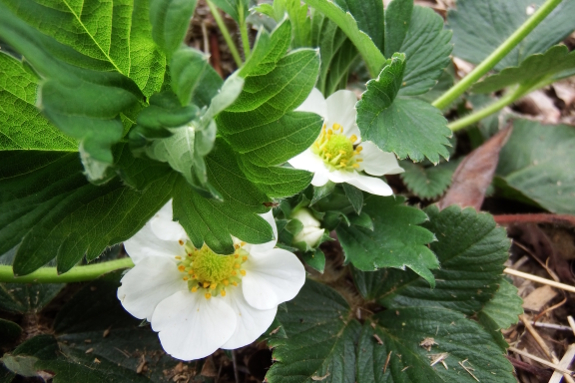
Starting spring crops inside is also handy because the soil takes
longer to warm up in Ohio. Our strawberries are just now starting to
bloom, two or three weeks later then they tended to in Virginia. That
means annuals would also be two or three weeks behind...if I hadn't
jumped the gun with early seeding indoors.
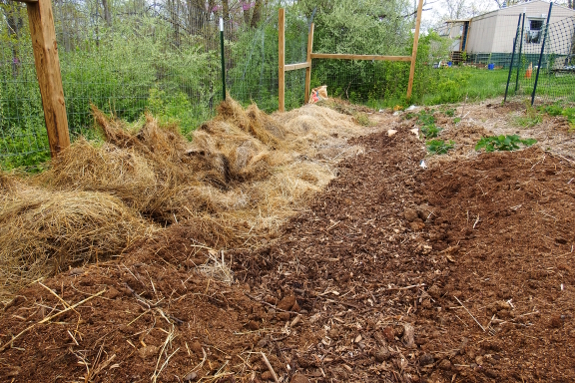
Of course, that's all short-term fixes that will be in the rear-view
mirror in a few short years. To boost our soil's fertility fast, I'm
layering huge quantities of organic matter in areas I won't be planting
into for several months.
First came the spoiled hay (left) from a local farmer --- she had more
of it than I could handle, but I piled up as much as I could to start
building the soil. Aisles of wood chips (middle) will feed fertility
more slowly, while new beds made of deeply mounded horse bedding/manure
(right) will rot down within a few months.
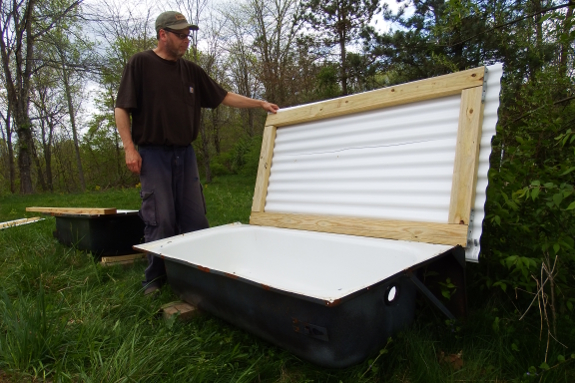
As if that's not enough, Mark is building me worm bins out of old
bathtubs. We'll fill these up with horse manure as well (so easy to
accumulate now that it can be scooped into our truck then unloaded
directly into our garden on the other end!). By this time next year, we
should be overflowing in good, rich compost to feed our dirt.
Want more in-depth information? Browse through our books.
Or explore more posts by date or by subject.
About us: Anna Hess and Mark Hamilton spent over a decade living self-sufficiently in the mountains of Virginia before moving north to start over from scratch in the foothills of Ohio. They've experimented with permaculture, no-till gardening, trailersteading, home-based microbusinesses and much more, writing about their adventures in both blogs and books.
